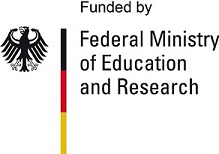Title
Contractile remodeling in atrial fibrillation: Mechanisms and therapeutic approaches
Coordinating Investigator
Prof. Ulrich Schotten, Maastricht, The Netherlands
Overall Responsibility
Atrial Fibrillation NETwork (AFNET), Münster, Germany
Funding:
German Federal Ministry of Education and Research

Target
Atrial contractile dysfunction is known to persist for several weeks after cardioversion of atrial fibrillation. The project had two objectives: first, to explore the mechanisms underlying contractile dysfunction in the fibrillating atrium. The second aim was to find out whether atrial contractility can be restored by positive inotropic substances.
Results
The working group was able to prove that for several months, fibrillating human atrial tissue is not as diseased as was generally assumed. The contractile reserve is reduced by only about 15 percent. Therefore, treatment of the loss of contractility with drugs that increase cardiac strength after cardioversion appears possible in principle.
Animal studies (in goats) have shown that new potassium channel blockers are able to increase the contractile force after cardioversion of atrial fibrillation to above-normal values within minutes, although contractility was completely abolished immediately after cardioversion.
The project leader PD Dr. Ulrich Schotten was awarded the Woldemar Mobitz Prize 2005 for his work on contractile remodeling.
Publications
Schotten U, Verheule S, Kirchhof P, Goette A. Pathophysiological mechanisms of atrial fibrillation: a translational appraisal. Physiol Rev. 2011;91:265-325. Review. Erratum in: Physiol Rev. 2011;91:1533. DOI:10.1152/physrev.00031.2009
Greiser M, Neuberger HR, Harks E, El-Armouche A, Boknik P, de Haan S, Verheyen F, Verheule S, Schmitz W, Ravens U, Nattel S, Allessie MA, Dobrev D, Schotten U. Distinct contractile and molecular differences between two goat models of atrial dysfunction: AV block-induced atrial dilatation and atrial fibrillation. J Mol Cell Cardiol. 2009; 46(3):385-94.
Greiser M, Halaszovich CR, Frechen D, Boknik P, Ravens U, Dobrev D, Lückhoff A, Schotten U: Pharmacological evidence for altered src-kinase regulation of ICa,L in patients with chronic atrial fibrillation., Naunyn Schmiedeberg’s Arch Pharmacol, 2007 375(6):383-92.
Schotten U, de Haan S, Verheule S, Harks E, Frechen D, Bodewig E, Greiser M, Ram R, Maessen J, Kelm M, Allessie M, Van Wagoner D.: Blockade of atrial-specific K-currents increases atrial but not ventricular contractility by enhancing reverse mode Na/Ca-exchange., Cardiovasc Res 2007;73:37-47
de Haan S, Greiser M, Harks E, Blaauw Y, van Hunnik A, Verheule S, Allessie M, Schotten U: AVE0118, Blocker of the Transient Outward Current (Ito) and Ultrarapid Delayed Rectifier Current (IKur), Fully Restores Atrial Contractility After Cardioversion of Atrial Fibrillation in the Goat.; Circulation 2006;114:1234-42
Goette A, Schotten U. Inhibition of angiotensin II type 1 receptors reduces atrial stunning and spontaneous echo contrast after electrical cardioversion of atrial fibrillation. Eur Heart J. 2006; 27(17): 2034-2035.
Kirchhof P, Schotten U.: Hypertension begets hypertrophy begets atrial fibrillation? Insights from yet another sheep model.; Eur Heart J. 2006 Dec;27:2919-20.
Ravens U, Wettwer E, Schotten U, Weßel R, Dobrev D: Neue Antiahythmika in der Therapie des Vorhofflimmerns II. Ionenkanalblocker; Herzschr Elektrophys 2006, 17: 64-72.
Schotten U, Dobrev D, Kirchhof P, Kääb S, Lewalter T, Goette A: Pathophysiologie des Vorhofflimmerns; Deutsches Ärzteblatt. 2006; 103 (25):B1491-B1497.
Schotten U, Dobrev D, Kirchhof P, Kääb S, Lewalter T, Goette A: Vorhofflimmern: Grundlagenforschung bietet neue Chancen für innovative pharmakologische Therapieansätze.; Deutsches Ärzteblatt 2006, 103(25): A1743-A1748. (Joint activity of several Section C network members)
